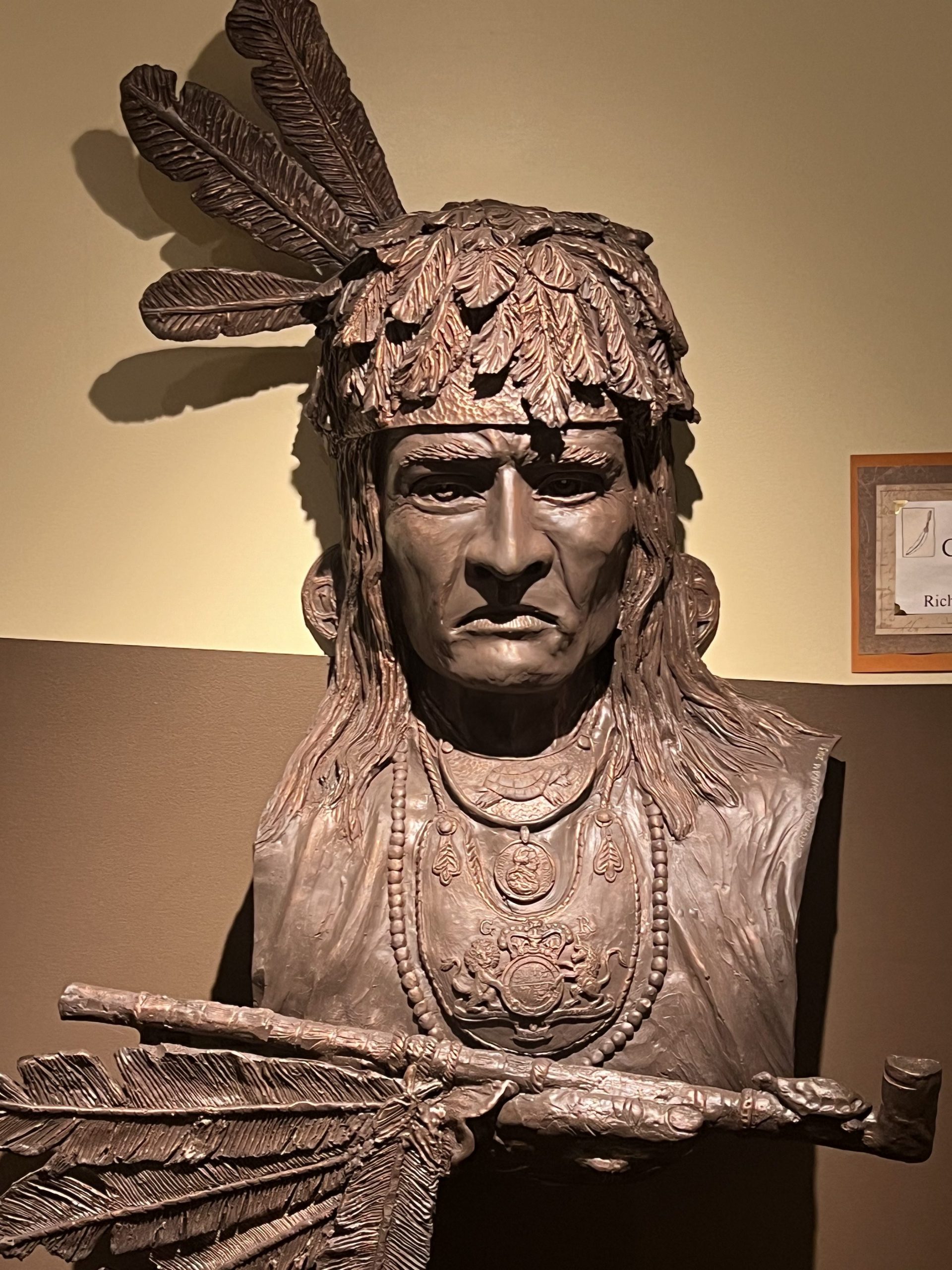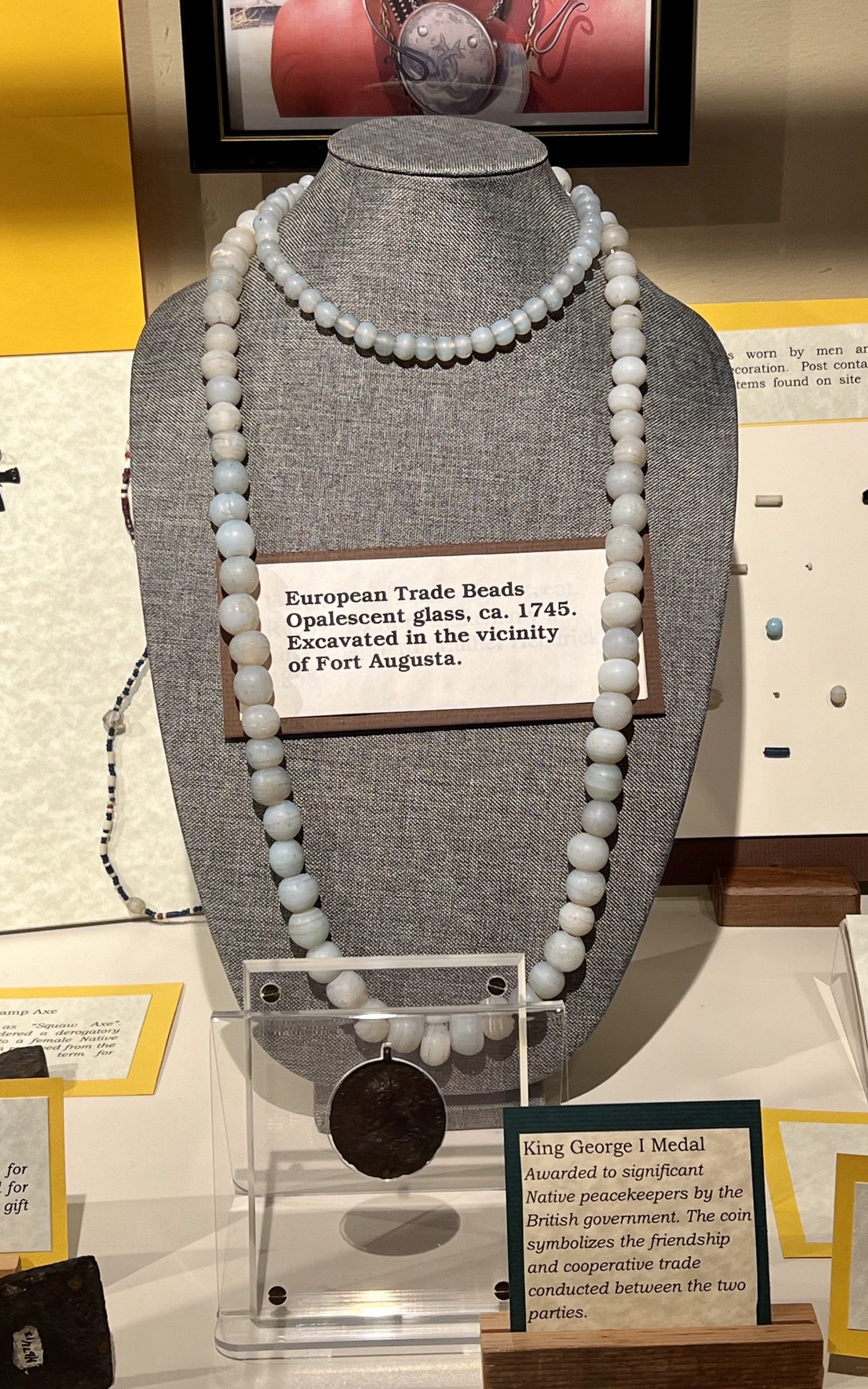
In the fall of 1748, Shikellamy traveled to the Moravian headquarters in Bethlehem, Pennsylvania. On his journey back, Shikellamy fell ill with a fever and passed away soon after on December 6, 1748. His role in Shamokin was passed onto his eldest son John, also known as Tachnechdorus. Missionaries Zeisberger and Mack built Shikellamy’s wooden coffin and three days later the great Chief Shikellamy was laid into his final resting place. Many residents of Shamokin stood by watching his burial, questioning what this meant for the future of the town and its inhabitants.
Today, underneath the soil of present-day Sunbury lies the resting place of Chief Shikellamy in an unmarked grave. Although the exact location of the grave is unknown, it has been suggested the location is what is now a parking lot, its surface covered by concrete. Is this how the future generations thank the man who laid the foundation for the ground they walk on?
Although monuments and educational efforts have been put in place, responsibility also falls on the younger generations to take it upon themselves to learn about the people who have come before them, and hopefully, initiatives like the Bucknell Greenway are a promising start. Whether the community’s effort to carry on the legacy of Chief Shikellamy suffices is subjective, but local sites that honor his past can be found nearby.
Near the location of Shikellamy’s unmarked grave stands a stone monument placed by the Daughters of The American Revolution in 1915. The monument denotes “This diplomat and statesman was a firm friend of the province of Pennsylvania”. The words “friend” and “peace” follow his legacy through all accounts of the Chief’s past. Cindy Inkrote echoes this sentiment saying, “He wanted everyone to be able to live peacefully. I have to say that this area was very peaceful during his lifetime here.”

Walking about a quarter mile north of Shikellamy’s burial site to Front Street in Sunbury (the site of Shamokin) you can see a platform originally erected in by the Lions Club in 1964 which is now a gazebo for viewers to look across the Susquehanna River and catch a glimpse of the profile of Chief Shikellamy etched into the cliff. Adjacent to the platform stands a historical marker explaining Shikellamy’s significance in the area.
Catching the eye of many visitors to the Northumberland County Historical Society are the 118 opalescent glass beads forming two strings of a necklace supposedly worn by Chief Shikellamy along with a copper medal known as the George I Indian Peace Medal from 1714. Uncovering the items occurred through a flood unearthing graves from an Indian cemetery in Sunbury in 1860. Pictured above is a bust of Chief Shikellamy, which is also housed in the historical society. Created by Richard E. Bonham in preparation for the bust located in Shikellamy High School. The bust features Shikellamy wearing the beads and peace medal.
To further remember Shikellamy’s legacy, his name has been used to name the Shikellamy School District, Chief Shikellamy Elementary, and Shikellamy State Park. Of note, in recent years questions have been raised on the appropriateness of naming the school district Shikellamy School District, and in particular the mascot of Shikellamy’s High School the “Braves”. Bucknell Professor and editor of Cultures at the Susquehanna Confluence Katherine Faull explains, “Shikellamy School district and their mascot and you know all of these things that are just insulting to anyone who, A, knows anything about the history of Shikellamy, and B, also who might be Native American.”
Sources & Recommended Readings:
- “Shikellamy, ‘A Person of Consequence.’” In Northeastern Indian Lives, 1632–1816, edited
by Robert S. Grumet, 227–57. Amherst: University of Massachusetts Press, 1996. - Faull, K. M. (2024). Cultures at the Susquehanna Confluence : the diaries of the Moravian mission to the Iroquois Confederacy, 1745-1755. The Pennsylvania State University Press.
- Johansen, B. E., & Mann, B. A. (2000). Encyclopedia of the Haudenosaunee (Iroquois Confederacy). Greenwood Press.
- Carter, J. H. (1995). Shikellamy : the Indian vice king at Shamokin. Northumberland County Historical Society.
- Donehoo, G. P. (1916). Shikellamy. The Red Man, 8(5). https://link.gale.com/apps/doc/OEDLQA870398051/INDP?u=bucknell_it&sid=bookmark-INDP&xid=582835ae
- Donehoo, G. P. (1914). Shikellamy; a Prominent Indian Chieftain of Pennsylvania. The Red Man, 7(4). https://link.gale.com/apps/doc/HJFAGT468687455/INDP?u=bucknell_it&sid=bookmark-INDP&xid=b59ae859
- (n.d.). Shikellamy. Sunbury: A History. https://www.departments.bucknell.edu/environmental_center/sunbury/website/Shikellamy.shtml
- *See post with interview links
Comments